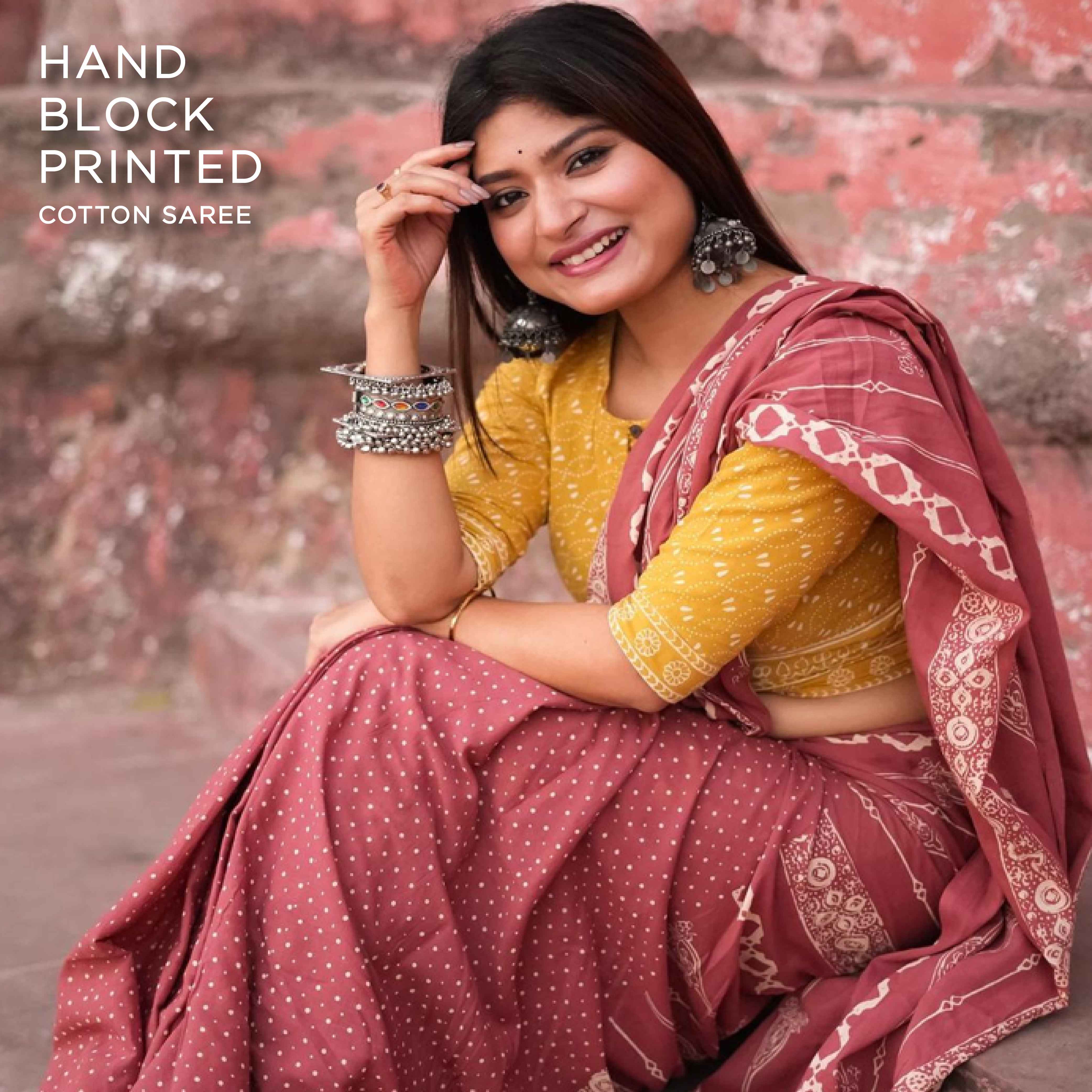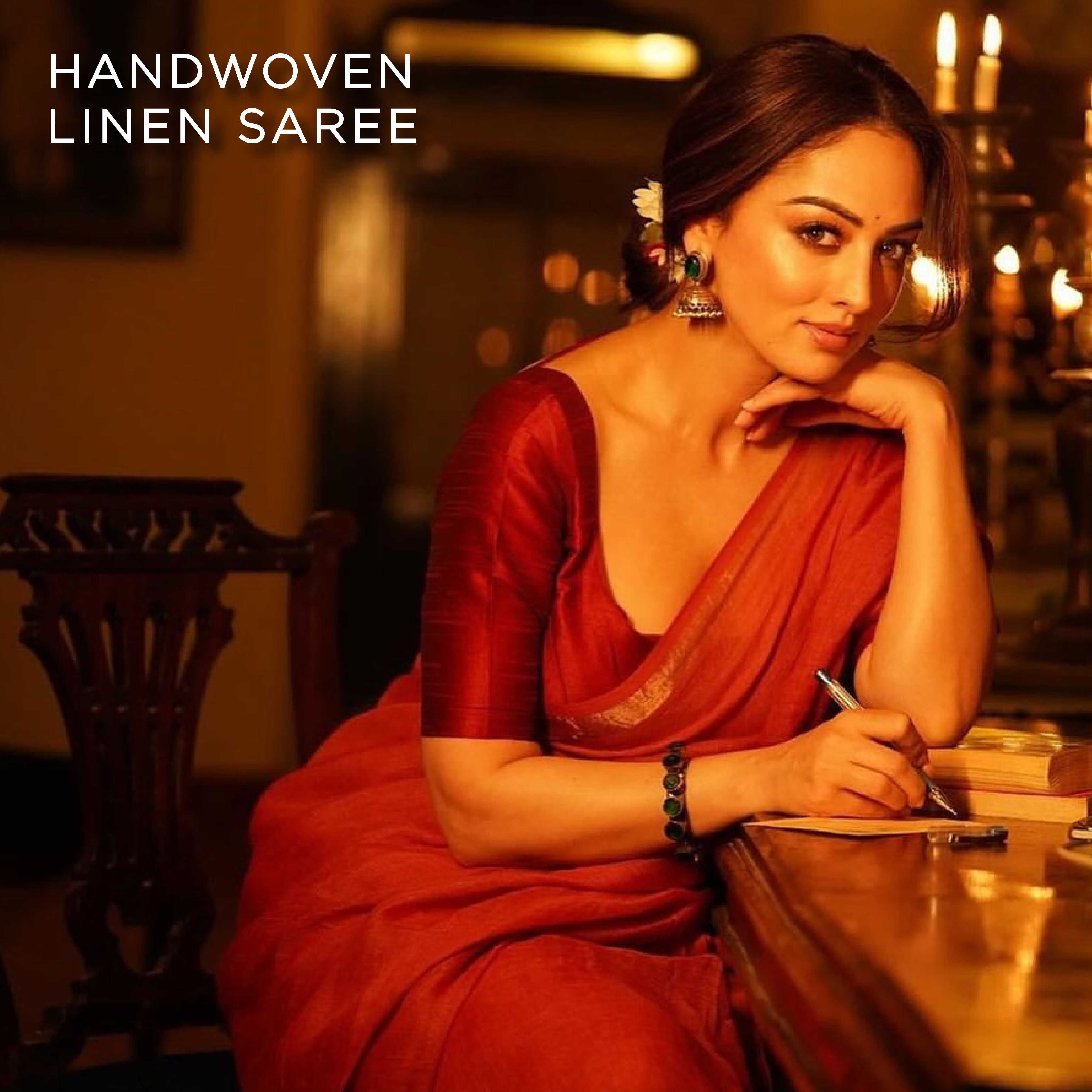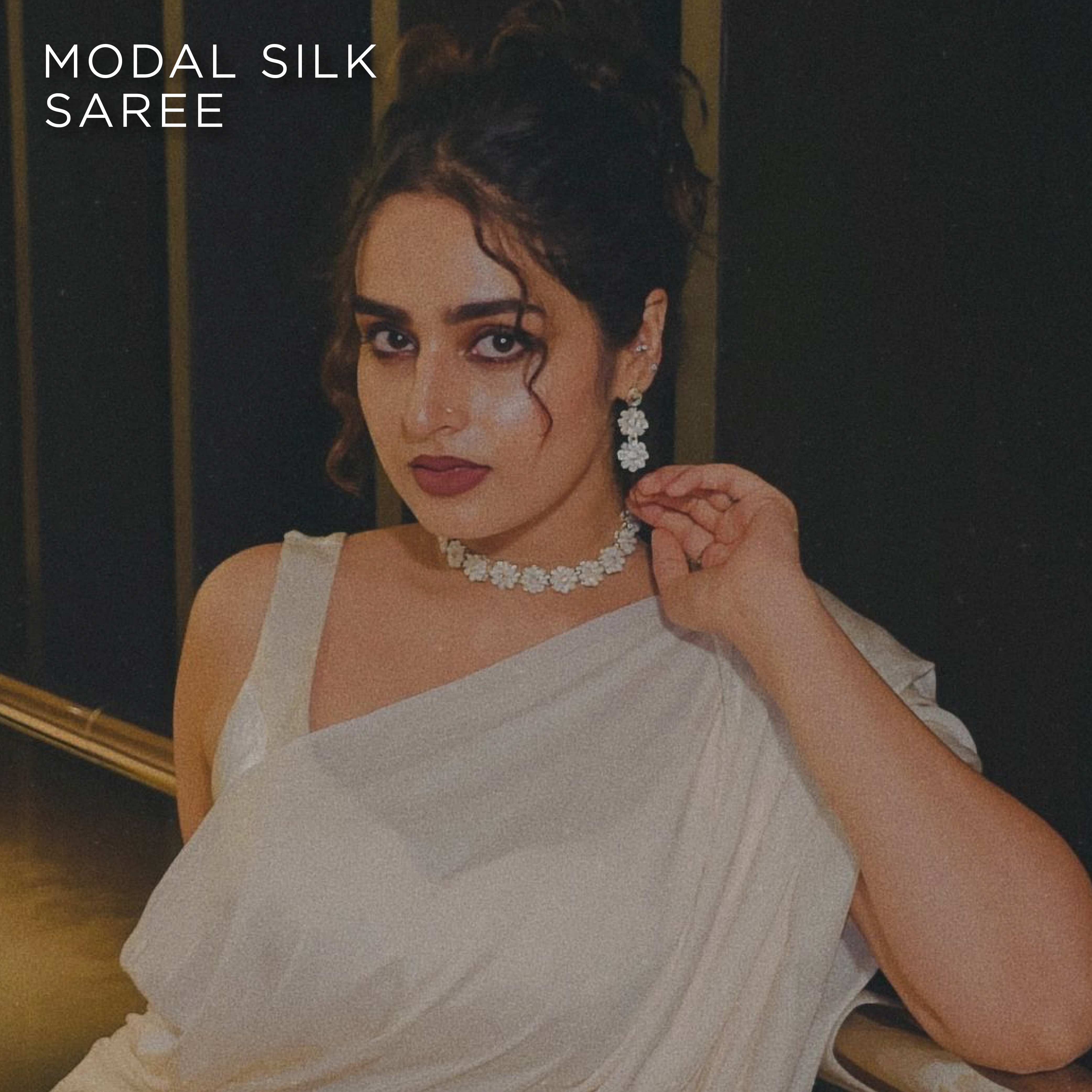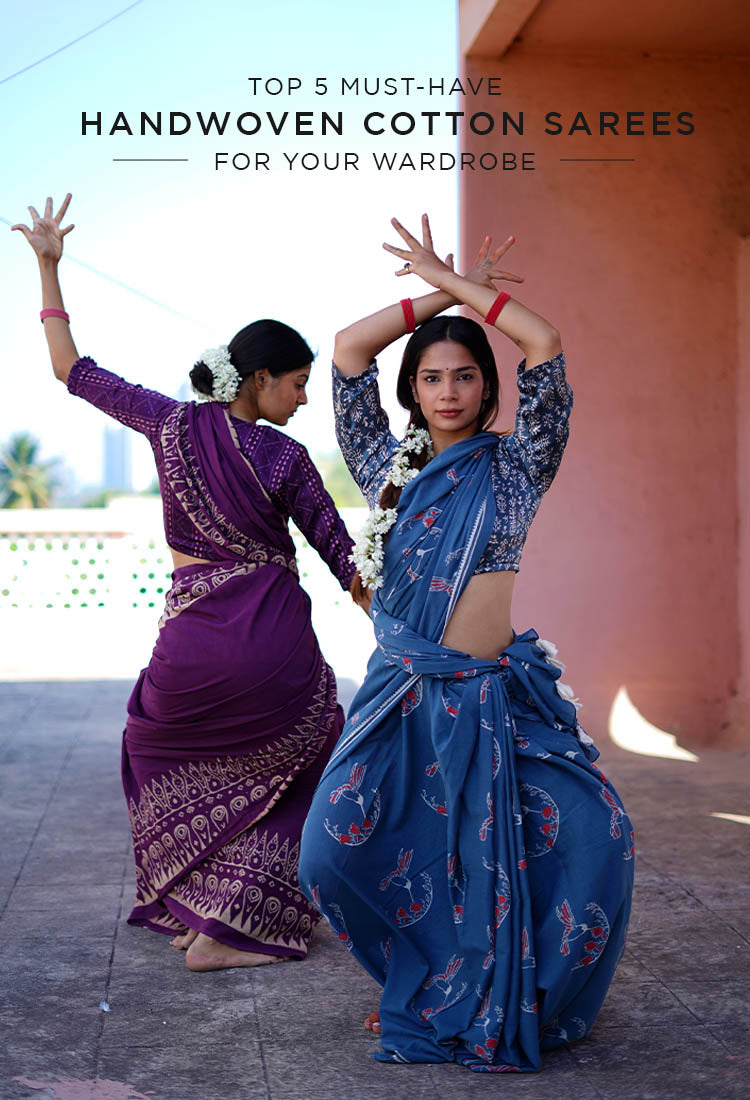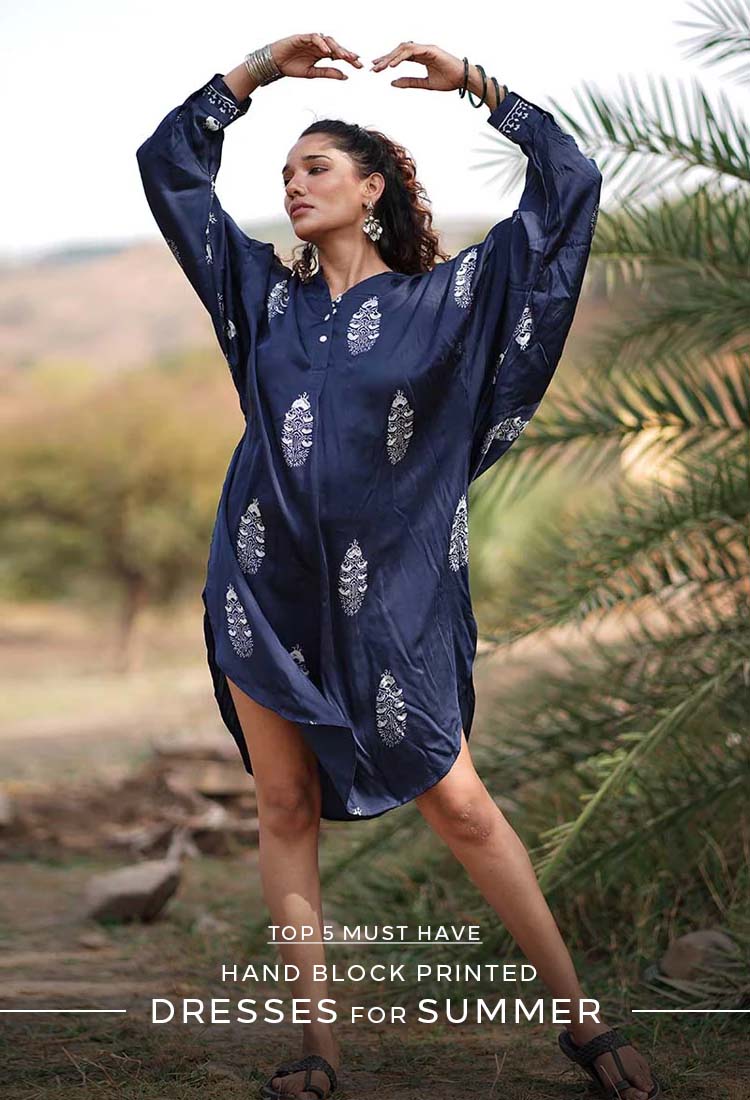Saree, an unstitched drape of fabric, is more than just a garment ; it's a living embodiment of Indian culture, tradition and artistry. Among the myriad variations of this iconic attire, the handwoven sarees for women hold a special place , representing the rich heritage passed down through generations of skilled artisans. From the regal Banarasi silk to the rustic charm of the Tant saree for women each weave tells a unique story of culture and craftsmanship. In this blog, we will take you on a journey through the diverse and vibrant world of handwoven sarees, exploring their history, techniques and enduring legacy.
A Tapestry of Time: The History of the Saree
Ancient Indian literature and sculptures provide testament of the saree's existence, which dates back thousands of years. "Saree" is a word that comes from the Sanskrit word "sati," which means "strip of cloth." At first, sarees for women were just plain cotton or linen drapes that had symbolic and practical uses. As the social, economic, and creative backdrop of the Indian subcontinent changed over time, the saree designs changed as well, including a variety of textiles, weaving techniques, and embellishments.
With the development of exquisite silks, elaborate embroidery, and stunning motifs influenced by Islamic and Persian art, the saree designs creativity reached new heights during the Mughal Empire. Under royal contributions, the handloom industry thrived, and weaving hubs all over India created their own distinctive designs and specialties. Through their saree for women each region displayed its unique artistry and cultural identity, from the exquisite Chanderi weaves to the sumptuous Banarasi silks.
The Magic of Handloom: Weaving Techniques
The process of weaving a saree is labour-intensive and requires immense skills. The traditional looms, age-old techniques and dedication of weavers contribute to the unique beauty of each saree.
Yarn Selection: The first step in the process is to choose premium cotton or silk threads.
Dyeing Process: Vibrant colors are produced using both natural and chemical dyes.
Weaving Techniques: Every saree is woven using a different technique, such as Zari, Jamdani, or Ikat.
Final Touches: The finished item is cleaned, quality-checked, and ready for sale.
Check out this Nutan Handwoven Linen saree from our exclusive range of products.
The Role of Handwoven Sarees in Indian Culture
Handwoven sarees play an integral role in Indian traditions, ceremonies and daily life. In Indian customs, rituals, and daily life, handwoven sarees are significant. These sarees for women have cultural and emotional importance, whether they are worn by a bride on her wedding day or as a treasured inheritance by a grandma.
Bridal and Festive Wear: Many Indian brides opt for handwoven saree for wedding, considering them auspicious.
Regional Identity Symbol: Every state has a distinctive weaving that symbolizes its own customs and history.
Sustainable Fashion: Handwoven sarees promote traditional craftsmanship and are environmentally benign, in contrast to machine-made textiles.
A Kaleidoscope of Culture: Regional Variations
A rich tapestry of handwoven sarees has emerged from India's enormous geographic size and varied cultural legacy, with each region showcasing its own distinct design, motifs, and weaving customs. Among the most well-known saree styles are:
Banarasi Sarees (Uttar Pradesh)
These sarees are renowned for their elaborate designs influenced by Mughal art, rich silk fabric, and intricate brocade work. These are generally used as a saree for wedding and other festive occasions as they are frequently embellished with gold or silver zari.
Kanjeevaram Sarees (Tamil Nadu)
Kanjeevaram Sarees are recognized for their vivid hues, luxurious silk, and unique temple designs. This saree for women is frequently worn during religious events and festivities since they are thought to be auspicious.
Mysore Silk Sarees (Karnataka)
Mysore Silk Sarees are defined by their rich hues, silky texture, and understated yet sophisticated designs. Made from pure silk, these sarees are admired for their strength and enduring luster, along with smooth saree draping.
Chanderi Sarees (Madhya Pradesh)
Made by weaving cotton and silk yarns together, Chanderi sarees are highly valued for their sheer texture and light weight. These sarees are ideal for summer wear and often have delicate flower designs giving an aesthetic saree look.
Check out this Eliana Hanwoven Linen saree from our exclusive range of products.
Paithani Sarees (Maharashtra)
Paithani Sarees are renowned for their elaborate peacock designs, vivid hues, and gold or silver zari embroidery. Traditionally made from pure silk, these sarees for women are seen as a symbol of marital love.
Baluchari Sarees (West Bengal)
Baluchari Sarees are known for their elaborately woven representations of epics, mythical themes, and societal norms. Usually composed of silk, these sarees are widely recognized for their intricate patterns and vibrant hues.
This hardly scratches the surface of the rich and varied world of handwoven sarees. Each weaver, group, and location adds to the vivid and rich fabric of Indian textile tradition by telling their own story via their crafts.
The Enduring Significance: Sarees in the Modern World
Indian women still hold a particular place in their hearts for the handmade saree, even in the face of quick fashion and the growing appeal of Western clothing. It represents identity, tradition, and cultural pride and is more than just a piece of clothing. Sarees are worn for many different events, including religious rituals, saree for wedding, festivals,saree for farewell and daily wear. They serve as a tribute to the ageless elegance of handcrafted creativity and the enduring strength of tradition by enabling one to show off elegant saree poses.
Check out this Ahona Handwoven Pure cotton saree from our exclusive range of products.
Growing awareness of sustainable fashion and a desire to assist traditional craftspeople have led to a revival of interest in handwoven sarees in recent years. In order to give the saree designs a modern twist while maintaining its tradition, designers are fusing hand woven materials into modern silhouettes. Young ladies are experimenting with various styles and draping techniques as they rediscover the saree's allure and adaptability.
The handloom sector is currently seeing an upswing after encountering difficulties as a result of competition from power looms and less expensive imports. Together, government programs, nonprofits, and ethical shoppers are promoting handwoven saree for women, giving weavers access to resources and markets, and protecting this priceless cultural legacy for coming generations.
The Future of Handwoven Sarees: A Legacy of Artistry
With a rising recognition of their artistry, sustainability, and cultural value, handwoven sarees appear to have a bright future. We can make sure that this rich legacy endures by encouraging handloom weavers, showcasing their work, and informing customers about the importance of handcrafted fabrics. More than just a piece of clothing, the saree is a living art form that exemplifies the talent, imagination, and commitment of Indian craftspeople. It is our duty to uphold this tradition as we go forward, to honor the beauty of handwoven sarees, and to make sure that they will continue to adorn the world with their classic elegance for many more generations to come.
Check out this Belladona Handwoven cotton saree from our exclusive range of products.
Beyond The Fabric: The Social and Economic Impact
The handloom industry plays a crucial role in the social and economic lives of millions of weavers, particularly women in rural India. They can preserve their traditional skills and cultural identity while earning a living via weaving, which also enables them to become financially independent. Along with getting a lovely garment, buying handmade sarees helps support the incomes of talented artisans and promotes the sustainable development of rural communities.
Styling Handwoven Sarees
The beauty of handwoven sarees lies not only in its craftsmanship but also in its versatility. There are innumerable ways to style a handwoven saree to fit your individual style and the event, whether you're going for a traditional or modern mood.
Blouse Pairing: The Perfect Complement
Contrast is Key: The saree look can often be customized to stand out with a contrasting blouse. Think of hues that blend in well with the saree's color scheme or provide a striking contrast.
Fabric Matters: Select a blouse material that goes well with the saree draping. While a cotton blouse looks great with a cotton saree, a silk blouse looks good with a silk saree. But don't be scared to try new things! A lighter saree can be given texture with a raw silk blouse.
Sleeves and necklines: Try a variety of sleeve lengths and necklines to see what suits you best. While a deep V-neck can be more glitzy, a boat neck or high neck can offer a sense of refinement. While elbow-length sleeves have a more classic appeal, sleeveless blouses are more contemporary.
Embellishments: Take into account the saree's embellishments when selecting a blouse. A plain blouse can work best if the saree for women has a lot of embellishments. You could opt for a blouse with more embellishments if the saree is plain.
Check out this Amber Handwoven Linen saree from our exclusive range of products.
Accessories: Adding the Final Touches
Jewellery
Select pieces that go well with the saree poses and the event. Traditional gold jewellery is frequently worn with silk sarees. Silver jewellery can give cotton or linen saree designs a more contemporary look. Consider the kind of work on the saree; bolder items go with heavier embroidery, and delicate jewellery goes with delicate work.
Footwear
Choose footwear that are both fashionable and cozy. While flats are more useful for daily wear, heels can provide height and style. When selecting your shoes, take the occasion and the saree's drape into account. A touch of ethnicity can be added with Juttis or Kolhapuri chappals.
Handbags
For carrying necessities, a tiny handbag or clutch is ideal. Select a purse that goes well with the saree look and your entire ensemble.
Belts
A belt can tighten your waist and give your figure more definition. This looks really good with modern draperies.
Bindis
Adding a bindi to your saree ensemble will give it a more traditional feel. Select a bindi that goes well with the style of the saree and the contour of your face.
Take Away For You!
Handwoven sarees for women are more than just a garment; they’re living legacies of India’s rich textile industry. Every saree embodies the spirit of the weaver, the local customs, and the grace of classic style. Supporting handwoven fabrics as buyers helps to preserve a craft that has strong roots in craftsmanship and history. By purchasing these saree online, we support the livelihoods of talented artisans in addition to embracing sustainable fashion, guaranteeing that this priceless legacy will endure for many more generations.

